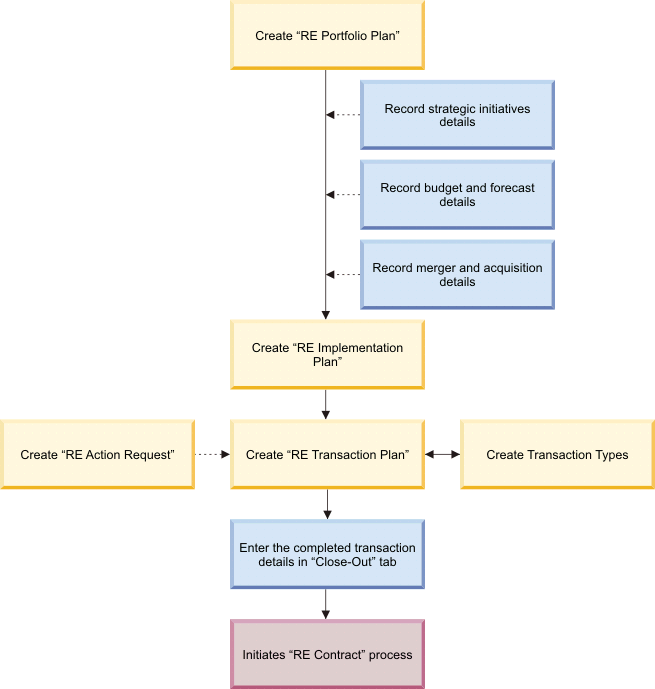Real estate process flows
Before you can decide to purchase or lease a property, you might consider how the real estate transaction fits into your real estate portfolio strategy. This consideration represents the real estate planning that occurs before the real estate contract management begins.

The first phase in the real estate management process is planning the strategies and goals of the real estate portfolio. The second phase is identifying the transaction scenarios from the portfolio, planning the real estate transactions from the scenarios, and obtaining or releasing the properties. After planning, the third phase is documenting the clauses, options, and terms for the lease or purchase transactions by creating their records in the application. The fourth phase includes maintaining contracts by sending and receiving notifications about upcoming dates, and revising each contract through proposed changes and amendments. The final phase includes managing the scheduled payments, one-time payments, pass-through payments, payment adjustments, accounts payable, and accounts receivable. The first two phases cover real estate planning of transactions and projects, while the next three phases cover real estate contract management and lease accounting.

For example, you might plan whether to purchase or lease a new property by referring to its terms and conditions. Then, you might compare the terms and conditions to the overall strategies and goals of the real estate portfolio. For each portfolio plan, you can develop a set of targeted implementation plans. For each implementation plan, you can develop a set of detailed transaction plans. For each transaction plan, you can develop a set of scenarios or possible events. For each scenario, you can assemble one or more project transactions to represent a potential real estate solution. These transactions are determined by the transaction type of each property. You can select the transaction type that provides the best financial and non-financial benefits. The different transaction types include acquisition, disposition, expiration, termination, lease, and sublease.
The business process flow in your organization might not perfectly match the business process flow or application process flow that is delivered with the IBM® TRIRIGA® application. In the IBM TRIRIGA Application Platform building tools, you can modify the process flows to meet your company standards and policies.